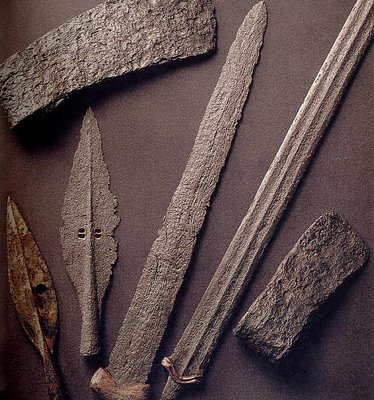THE IRON AGE


THE IRON AGE
Iron Age, marks the period of development of TECHNOLOGY, when the working of iron came into general use, replacing bronze as the basic material for implements and weapons. It is the last stage of the archaelogical sequence known as the three-age system (Stone Age, Bronze Age, & Iron Age).
Chronologically, the term is only of local value because iron took the place of bronze at different times in different cultures.
The major technical advance of the early Greek period was the widespread use of iron. Furnaces were developed that could reach the high melting temperature of that metal. Iron technology had spread throughout the classical world by about 500 BC.
Early steels were discovered by adding small amounts of carbon to iron as it was hammered over a charcoal fire. Mining became well developed and included the use of pumps to keep mines from flooding.
Metalware was used for pots and dishes, sometimes with unforeseen disastrous results such as lead poisoning. Among the greatest Roman works were the large aqueducts that carried water for hundreds of miles, roads that spanned the empire, and public sewer systems.
Advances in building construction led to the widespread use of the arch by the Romans and to the invention of durable cements and concretes for structures that have survived to the present.
Technology also advanced weaponry with the development of catapults, better swords, and body armor.


0 Comments:
Post a Comment
<< Home